
Photo ©2011 Hardyplants
More photos
Photo ©2011 Hardyplants
Hedge Bindweed - Calystegia sepium
Family - Convolvulaceae
Also known as - Bugle vine, Bellbind
Formerly - Convolvulus sepium
Hedge Bindweed is easily confused with Giant or Large Bindweed Calystegia silvatica, a very similar species that has been introduced from the Mediterranean region, but not recognised as a separate species until 1948. The two are distinguished by their bracteoles, which overlap in C. silvatica but do not in C. sepium. With this confusion between Bindweed species, those found in Brickfields Park are being re–checked to ascertain their correct status.
A perennial vine growing to 3m (10ft) that twines itself around other plants and objects to assist its progress. Found throughout the eastern United States, and Europe in woodland margins, hedgerows and wasteland. Widespread and common in the South but rarer in the North. Arrow or wedge shaped pointed alternate leaves (usually hairless) 10–12cm (4–5in) long with funnel shaped white or white and pink striped flowers 3–7cm diameter (1.2–2.8in) across, appearing May to September fruit to a capsule containing 2–4 seeds. The solitary flowers are borne on long stalks 5–15cm (2–6in). Two leafy bracts which do not overlap are present at the base of the flower, the petals being fused into a funnel–like structure. Classed as a weed plant it grows from an extensive and tough rhizome root structure that has to be removed in its entirety to remove the plant, as very small pieces of root are capable of regenerating the plant. The creamy white root structure 3–10mm (0.125–0.4in) in diameter will grow in very rough and deprived soils favouring brownfield sites and waste ground. One of the food plants for the Plume moth.
Often mistaken for Field Bindweed – Convolvulus arvensis, (see below) however field bindweed leaves are smaller, with a more rounded apex and bases that are pointed or rounded, but not cut off squarely across the top as in hedge bindweed. Flowers of Field Bindweed are also much smaller than Hedge Bindweed at about half the size 1.5–5cm (0.6–2.0in).
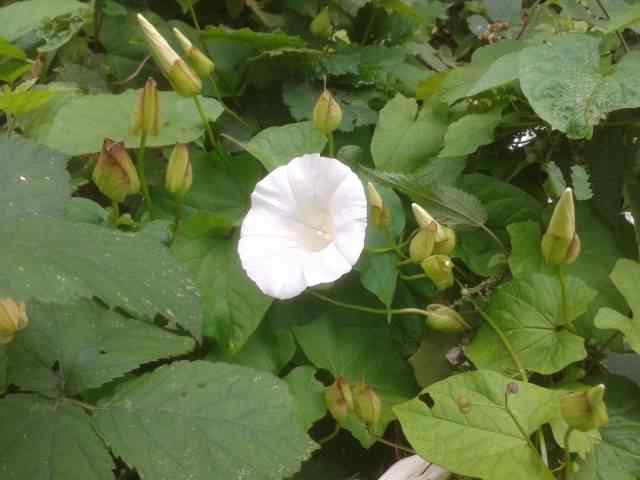 |
 |
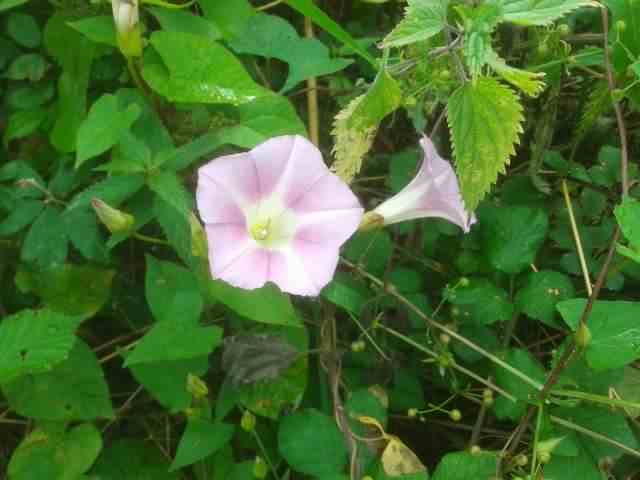 | |
| Click any photo for a larger image - photos above ©2016– | |||
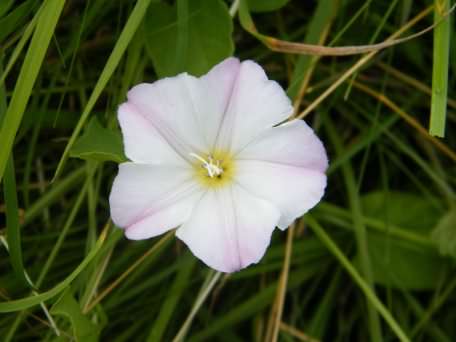 |
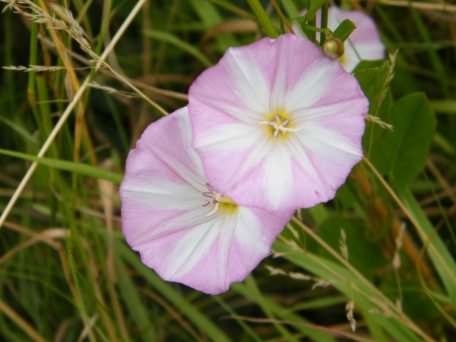 |
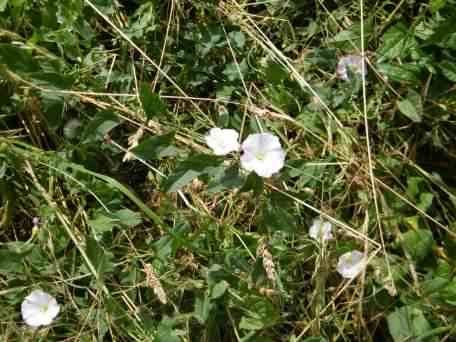 | |
| Field Bindweed – Convolvulus arvensis Click any photo for a larger image - photos above ©2016– | |||
Site design ©1999– Brickfields Country Park - Privacy -